New 'old' souvenirs.
We have worked with the notion of Tourism and traditional livestyle. We came up with a concept: Moengo Magic. We asked questions like: What is tradition? How to practise this in a modern live? Together with locals we have explored making 'new' souvenirs. In one of the images you can see newly appointed Minister of Trade and industry wearing our "Moengo Magic" shirts. It was a very good exercise. As of now we are busy lifting this up to a higher level. to be continued...
for The third time we featererd with our work in the nationale newspaper: De Ware tijd. Our closing event was a great succes. many different people came to see and hear about what our focus was Moengo. It was good to say goodbye to everyone we have worked with. coming year we will go back to continue some of the work we have started.
What’s in a name....
Indigenous or Indian? Boslandcreool (bush Creole), boslandneger (bush negro), boslandbewoner (bush inhabitant)…. A Negro or a black? Or of African descent? Where Javanese or Hindustani are called the same throughout Surinamese history what other ethnical groups are called by themselves or others is subject to change. It is not always clear. Not long ago inhabitants of the jungle that were descendant of escaped slaves were called ‘boslandnegers’, bush negroes. By everybody, it was not derogatory term. But the word ‘negro’ was not longer accepted. First by African Americans, then it spread to other countries. Negro is now replaced by ‘black’ in many countries.
But not here. African Americans had the concept of America as a multi cultural melting pot and could name themselves after what they are: African Americans as opposed to Native Americans. The Surinamese are not so lucky. There are no African Surinamese, Indian Surinamese, because the name Surinamese sort of covers everything. Suriname is a made up country anyway. When in 1674 the Dutch and English settled on trading Suriname for New Amsterdam, now New York, they found out that the indigenous peoples were not as suited for work on the plantation as African slaves. They were more or less ignored from that point on. Most people that live in Suriname are from foreign descend, imported from different parts of the world as workforce for the Dutch. Some as slaves, some as contract workers. The original inhabitants, indigenous tribes like the Trio, Karaiben, and Arawaks are not part of everyday life. There are hardly seen or heard. Neither clearly represented.
The identity of Suriname is not connected with the land itself and its original traits or use but with the use of the land by its colonizer, the Dutch. Its identity is therefore always troublesome. America was colonized too, but by people that came in search of a better future. Being American is being part of something good. Of course many bad things happened in getting to that future, but it is not all bad. Being a Surinamer has not that positive concept yet. The positive part has to do with being able to live together although being very different. It has not core same-ness, no shared positive motivation. Keti koti, the celebration of the end of slavery is still considered the national cultural holiday. Second is Independence Day, which is more of the same cutting of former ties.
But who knows…. The success of the I love Su t-shirt shows that there’s a growing appreciation of the whole idea of being something together. Maybe it will be linked to some values beyond surviving and coexisting. Or maybe the need for such first principles is just a Dutch obsession anyway.
Long live Lanti
Lanti, as the state here is called, seems to be the most inhabitant of Suriname. Everything that needs to be changed, breaks down or costs money: Lanti needs to fix it. In the villages along the river the only power there is, is from 7 to 11 at night. That’s when the gasoline generator starts. Why not longer? Well, Lanti doesn’t give more gasoline.. Give? Yes. Free electricity. And water? Used to be there, now it is broken. It’s not fixed yet. Lanti doesn’t come. New this: Lanti. New that: Lanti.
The idea of Lanti paying for your needs links with the way politics works here. When you have the power you let your voters benefit. Most political parties ore organized by ethnicity. For example: ABOP and BEP are Maroon parties. ABOP helped Bouterse form a government and was given four ministries. These ministries hire people and give contracts within their ethnical group. So ABOP voters along the river expect something back for their support. We would call this indirect corruption. Although this happens in Holland too, Amsterdam is renowned for only hiring Labor party people. But in general we link the winning of a party to the right to apply certain concepts of society. It is more abstract things like policies you are entitled to endow, not favor certain contractors. As is possible here: ministers can freely decide on who to give projects to up to 1,4 million srd. The contractors or experts are often spouses or family members. In Holland we have a more or less homogenous society: everybody is Dutch. Here in Suriname there are four ethnical groups who are more or less the same size. Allthough they live together it is not a mixed society (yet). The concept ‘common good’ is more difficult to define.
On top of this basic sentiment that politics is about interests, not principles, there is the lack of understanding how state budgeting works. When confronted with all this free stuff we ask a taxi driver. “But how can Lanti pay for this, you need to pay a lot of taxes here?” “ Not really”, he replays and explains to us: Lanti is a state. They have money… The relation between taxes paid and money spend simply is not there. When you have the power you will somehow have the money.
Things might be changing though. There is talk of a new anti corruption law. More and more political parties are leaving their strictly ethnical program. The most important change will have to come from people themselves: choosing independence over Lanti handouts. This independent position will also open up the possibility to make demands freely instead of looking for trade-offs. In this light paying for your electricity would be a great investment in the future.
Happy Women’s Day
"When I ask them why don’t you send him to school, just register him, they answer that the papers aren’t fixed yet. It is too much ‘loperij’, Sranangtongo for bureaucracy. Sadly they are right. It is quite an undertaking to get the name on the birth certificate changed. You have to go back and forth to Paramaribo. Every time you need another form or somebody else who isn’t in the office. Every trip costs of course. It took me five trips and half a year to get a simple ‘e’ added to my last name. And I am a teacher, they don’t send me away easily. So I can understand that this is a hindrance." The head teacher sighs..
"The reason why papers need changing is that they prefer to give birth in Guyana, on the French side. You don’t have to pay anything there. But the language they speak, Aucane, although it has French influences, is very different from French. They often give the wrong answers when they not fully comprehend the questions. Mistakes in names and dates are common. When after giving birth they go to the Suriname administration office with these papers the mistakes are copied. As a consequence the name of the child and the mother or father are different and years later the official papers turn out not to be valid for subscription in school.
For some mothers urgency to get a child enrolled school is not great. It’ll cost them a uniform, shoes, sporting clothes. The ‘loperij’ to get the birth certificate fixed forms just another obstacle. It can happen that a child is already seven before it first gets into school. By then it has already missed preschool. You have to put it in a class where it is the oldest child and not used to discipline at all. Not good for the child and for the class. Of course getting your child to school is obliged by law. Controls are not very strict though. When you want this problem to be solved many institutions have to work together… Unfortunately that is not a strong point in Surinam. "
Loperij
One of the most surprising experiences while shopping on the market in Moengo is the absence of fruit. Yes, there are mango’s, and bananas, but that’s it. When we want fruit, we are advised, ask bus driver Artur to stop at a fruit stall on the East/ West highway. How come there is no fruit in Moengo? In Paramaribo the market is full of all kinds of exotic produce. Don’t the maroon like fruit?
Artur smiles. We like fruit. There used to be lots of fruit. But now, all fruit is sold in st Laurent. On the French side. People take the fruit from their trees and their kostgrondje (allotment) there. They get much more money for it than in Moengo. And, just as important: they get Euros. Hard currency.
Euro’s? Yes, east of Surinam lies French Guyana. The river .. forms a natural border. Border town is Albina, a village on the road to Paramaribo. Albina is only half an hours drive from Moengo. There is an official border crossing, but nobody uses it. Everybody uses the korjalen (traditional boats) from Albina to cross the river to st Laurent. Illegally, no passport is ever shown. Which is surprising since French Guyana is part of Europe and therefore of the European union. Prices in French Guyana are at European level: twice that of Surinam. That’s why it is lucrative and traffic is both ways: Surinamese selling goods in French Guyana, French Guyanese buying in Suriname. Everybody is carrying big bags, jerry cans with petrol, car tires, you name it and avoiding taxes. This apparently is ok with both governments. Boats could be stopped easily. But we have seen no police.
So the absence of fruit makes sense. At the same time it is sad that you change your diet for monetary reasons. It is a sign of poverty, only more hidden. And a sign of an underlying problem: most maroon people still use the strategy of survival. The smuggling keeps the traders on the ‘hossel’. They don’t build a living that is independent and sustainable. As well the trade is not fortifying either state and promotes ‘cleverness’ over education. Because in the slipsteam of this the job of errant boy has come into existence: boys in the age from 8 tot 16, who help people carry their stuff from and to the market and to the cars. These boys come from Albina, and skip school to make some euros. Not because they don’t like education. Most of them coming from single parent families, it is also expected from them to help out. In st Laurent, Europe, mothers get child support and welfare. Child labor is not necessary. When they shop, their children are enjoying school. The forbidden fruit is not only sweet.
Forbidden fruit
But who do you address? Who is your audience? Every day we ask ourselves..
There is a strange juxtaposition between working with the community for tourism. Both positions imply different attitudes to reality. Different loyalties. A tourist is expecting clear and coherent stories about what and why the culture is what it is. A tourist expects ‘history’, ‘identity’ and a way to efficiently experience them. A tour, a trip, typical food. In short: a manual. Every inhabitant is seen as someone exotic with ‘typical’ trades. All the time this cultural exploration is documented with photo’s film and anecdotes. Exposing these 'trophies' to the home front by tweet what’s app or blog. It is allowed to comment on behavior and attitude without the restrictions.
When part of a community all this is different. Especially in a small close knit community as Moengo. Living together does not mean you are part of each other’s culture. Culture here is directly linked to ethnicity. Many Javanese people never visited the maroon villages in the bush. All though it is only a half hour trip. Maroon people have direct family ties to one village in specific with all its consequences and responsibilities. Speaking your mind publicly is next to impossible. Relations form your biggest asset. Some traditions are still part of life outside the villages, a lot have no place in more modern life in town. The clear experience of a certain culture the tourist has is far more complex and blurry when you are part of a society first. The project of T.A.S. (Tembe Art Studio link) actually tries to connect and teach culture. We as artist share in our independence the position of the tourist. But with our focus on relations and sense of belonging independence is a hollow term when not accepted as part of the community.
What has to give: our artistic values or our cultural ambitons? Is our work about this community or with this community?
Tourist, guest, resident…
But who do you address? Who is your audience? Every day we ask ourselves..
There is a strange juxtaposition between working with the community for tourism. Both positions imply different attitudes to reality. Different loyalties. A tourist is expecting clear and coherent stories about what and why the culture is what it is. A tourist expects ‘history’, ‘identity’ and a way to efficiently experience them. A tour, a trip, typical food. In short: a manual. Every inhabitant is seen as someone exotic with ‘typical’ trades. All the time this cultural exploration is documented with photo’s film and anecdotes. Exposing these 'trophies' to the home front by tweet what’s app or blog. It is allowed to comment on behavior and attitude without the restrictions.
When part of a community all this is different. Especially in a small close knit community as Moengo. Living together does not mean you are part of each other’s culture. Culture here is directly linked to ethnicity. Many Javanese people never visited the maroon villages in the bush. All though it is only a half hour trip. Maroon people have direct family ties to one village in specific with all its consequences and responsibilities. Speaking your mind publicly is next to impossible. Relations form your biggest asset. Some traditions are still part of life outside the villages, a lot have no place in more modern life in town. The clear experience of a certain culture the tourist has is far more complex and blurry when you are part of a society first. The project of T.A.S. (Tembe Art Studio link) actually tries to connect and teach culture. We as artist share in our independence the position of the tourist. But with our focus on relations and sense of belonging independence is a hollow term when not accepted as part of the community.
What has to give: our artistic values or our cultural ambitons? Is our work about this community or with this community?
With best intentions
Via via bereikte ons de naam Ellen Ombre. Schrijfster van onder andere het boek ‘Wie goed bedoelt’. Kernvraag in het boek, een verslag van een bezoek aan ontwikkelingswerk in Benin, is wanneer helpt hulp. Hoewel geschreven in 1996, de vette jaren, is de kwestie nog steeds actueel. Zeker voor ons heeft het een scherpe actualiteit. De voorwaarden van de residency zijn lesgeven aan kinderen en het achter laten van een beeld voor de collectie van het Art park Moengo. Is dat hulp? Of een bijdrage?
Het is een interessante vraag. Hulp veronderstelt dat je iets komt veranderen. Een bijdrage lever je aan iets dat in de grond goed of op zijn minst zelfstandig is. Of je het één of het ander doet is van een aantal factoren afhankelijk. Allereerst de soort structuur van de uitnodigende partij. Voor een festival of een congres lever je een bijdrage. Format, doel en onderwerp zijn helder geformuleerd. Zelfs een bijdrage die het nut van festivals of congressen in twijfel trekt kan zonder risico geprogrammeerd worden. Voor een instituut als een universiteit of een multinationaal bedrijf geldt hetzelfde. Missie, doel en modus operandi zijn dermate stevig dat kritiek mogelijk is, zelfs welkom, zonder het instituut zelf in de waagschaal te stellen. Bij opstartende initiatieven ligt het anders. In de aanloopfase zijn de bijdrage vormend. TAS is pril. De missie is misschien helder, kibii wi koni, bewaar wat we weten. Het doel, leven van je cultuur, ook. Het middel, toeristische activiteit die lokaal inkomen genereert, vanzelfsprekend. De modus operandi is echter nog in ontwikkeling. Hoe behoud je kennis? Welke kennis? Is cultuur die je opvoert voor toeristen nog cultuur? Welke cultuur wil je behouden. Wanneer te laat komen, of afspraken niet nakomen onderdeel zijn van de dagelijkse praktijk, is dat dan ook cultuur die bewaard moet worden? Of een slechte gewoonte. Wanneer lokale mensen mensen niet betrouwbaar blijken, mag je dan je vertrouwde mensen uit de stad laten komen? Is dat dan verraad? Of is juist betrouwbaarheid binnen een zakelijke relatie voorwaarde voor het hele project?
Typisch westerse opmerking? Een beginnende organisatie met bescheiden middelen is kwetsbaar. Wat is belangrijker of gewenster: cultuurgetrouw mislukken of cultuurvreemd voortbestaan? Wat is de derde weg? Wat is de rol van ons, residenten, daarin?
Wie goed bedoelt..
I did it again. Not planning it, but finding myself all of a sudden in the middle of it. Cleaning. Where dogs pee to mark their teritory, we clean. First the pots and pans. Then the cupboards. After a few days hesitation the windows. The walls, doors and Furniture follow.
Only after reading the book ‘everyday aesthetics’, by Yuriko Saito, I realise that it is not so much for hygienic reasonic reasons I clean, but that dirt in our culture is associated with sloth, indifference and lack of moral standards. So with bucket and mop I’m not so much cleaning: I am on a crusade.
In other cultures these connotations are far less strong. In Japan signs of wear signify a certain quality that is called wabi. Wabi helps you accept the finity of all things and even enjoy this. Now I clean with much more awareness: not removing all grime but saving some for the next generation. I don’t want to be a barbarian…
Soap and Water: The tools of Dutch Heritage
Solar Powerrrrr
When travelling trough Suriname it is impossible to miss the check. It is everywhere: shirt, trousers, umbrellas and the specific suriname wrap around skirt: the pangi. Check your local toko: sure they will be selling them. Why this importance of a motive we associate mostlywith Scotland and Burberry.. For an explanation we have to go back to the time of slavery. The bought free slaves and marrons were paid for their goods and services not only in money but also in ‘katoentjes’, pieces of cotton from India and later Holland. This material was checkered. It was used for loin cloths by the marroons as well as head dresses, the intricately folded kotos. It still is the most popular fabric sold today. Costs are very low: about a 1,5 us dollar a meter. For a pangi skirt the material is combined with a solid color fabric from which the decorative shapes are cut. Lastly the hem is finished off with a lace trimming. Total costs in material 5 us dollar. Added of course the many hours of choosing designing and sewing. For it is still an important cultural expression.
Allthough there never was a thing like special colors for certain clans there was a distinction in meaning. Blue and white is used for mourning. After six months of mourning a widow will still wear more subdued colors.
Pangi today means both the dress as the pattern. Nowadays a certain pangi will be used for a certain event. The cultural menaing has changed from a precious piece of cloth to a kind of branding. Dresscode pangi will ensue people to wear this specific pattern.
The next Moengo Festival in september will include a competition who is the most creative with the festival pangi. Entries will most likely range from a simple dress to a cake…………
what the Pangi?
When travelling trough Suriname it is impossible to miss the check. It is everywhere: shirt, trousers, umbrellas and the specific suriname wrap around skirt: the pangi. Check your local toko: sure they will be selling them. Why this importance of a motive we associate mostlywith Scotland and Burberry.. For an explanation we have to go back to the time of slavery. The bought free slaves and marrons were paid for their goods and services not only in money but also in ‘katoentjes’, pieces of cotton from India and later Holland. This material was checkered. It was used for loin cloths by the marroons as well as head dresses, the intricately folded kotos. It still is the most popular fabric sold today. Costs are very low: about a 1,5 us dollar a meter. For a pangi skirt the material is combined with a solid color fabric from which the decorative shapes are cut. Lastly the hem is finished off with a lace trimming. Total costs in material 5 us dollar. Added of course the many hours of choosing designing and sewing. For it is still an important cultural expression.
Allthough there never was a thing like special colors for certain clans there was a distinction in meaning. Blue and white is used for mourning. After six months of mourning a widow will still wear more subdued colors.
Pangi today means both the dress as the pattern. Nowadays a certain pangi will be used for a certain event. The cultural menaing has changed from a precious piece of cloth to a kind of branding. Dresscode pangi will ensue people to wear this specific pattern.
The next Moengo Festival in september will include a competition who is the most creative with the festival pangi. Entries will most likely range from a simple dress to a cake…………
Dutch design.
Today we visited Fort Zeelandia, a former fortress situated next to the river Suriname in the capital Paramaribo. This complex building built in 1651 is also the host to the Suriname Museum. The national collection is built upon the notion of social/ political and cultural diversity of the many tribes and peoples of Suriname. In one room there was a special section based on the research by professor Leo Balai on the topic of slaveship Leusden.
Leusden is the name of a wooden vessel (type Fregat) designed and built in 1719 in Amsterdam as a slaveship of the worldwide slave trade. In it's short life time it has carried about 7000 slaves from Africa to Suriname. The last journey of the vessel, its crew and ‘load’ ended as one of the biggest nautical and human catastrophies. A true dark corner.
From 1501 untill 1866 millions of Africans were emprisoned, sold and transported to do heavy labour on plantations. The labour was concerning the production of the luxury products for the West, being Tabacco, Coffee and Sugar.
The complex logistics of Leusden made me rethink the concept of Dutch Design. On an average trip the vessel would sail from Texel (Holland) loaded with ballast being dutch bricks. The ship would go to Afrika, pick up slaves and continue to Suriname. There the captain would unload the Slaves to work on the plantations. The bricks were now building material for startegic positions like fortress Zeelandia. Leusden would sail back to Europe with the produce of the plantations being Sugar or Coffee so in Amsterdam we could enjoy our high standards of life.
What a grand design!
Sources on Leusden and Fortress Zeelandia:
http://slaveshipleusden.webs.com/
http://en.wikipedia.org/wiki/Fort_Zeelandia_%28Paramaribo%29
http://www.devsur.com/summary-slave-ship-leusden-presentation-by-dr-leo-balai/2012/10/29/
http://www.foliaweb.nl/wetenschap/slavenschepen-geen-omgebouwde-koopvaardijschepen/
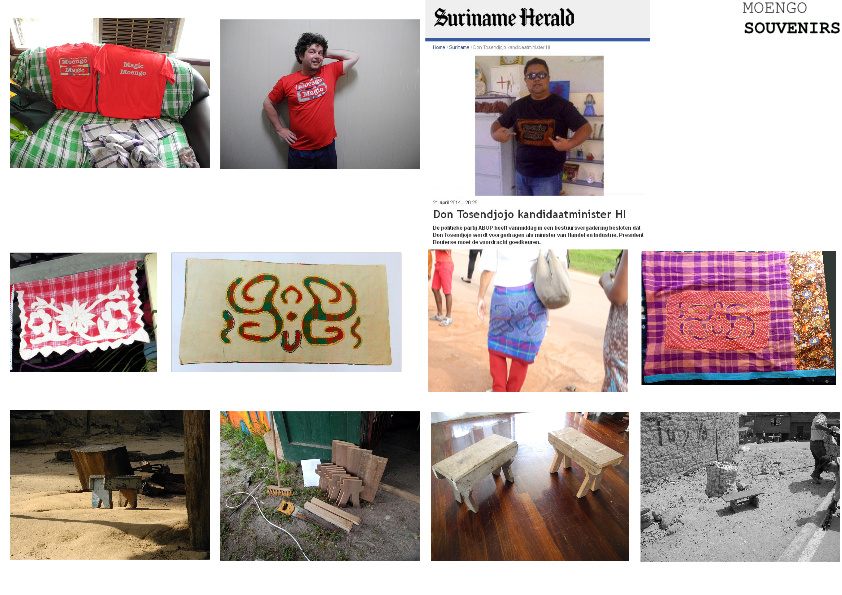
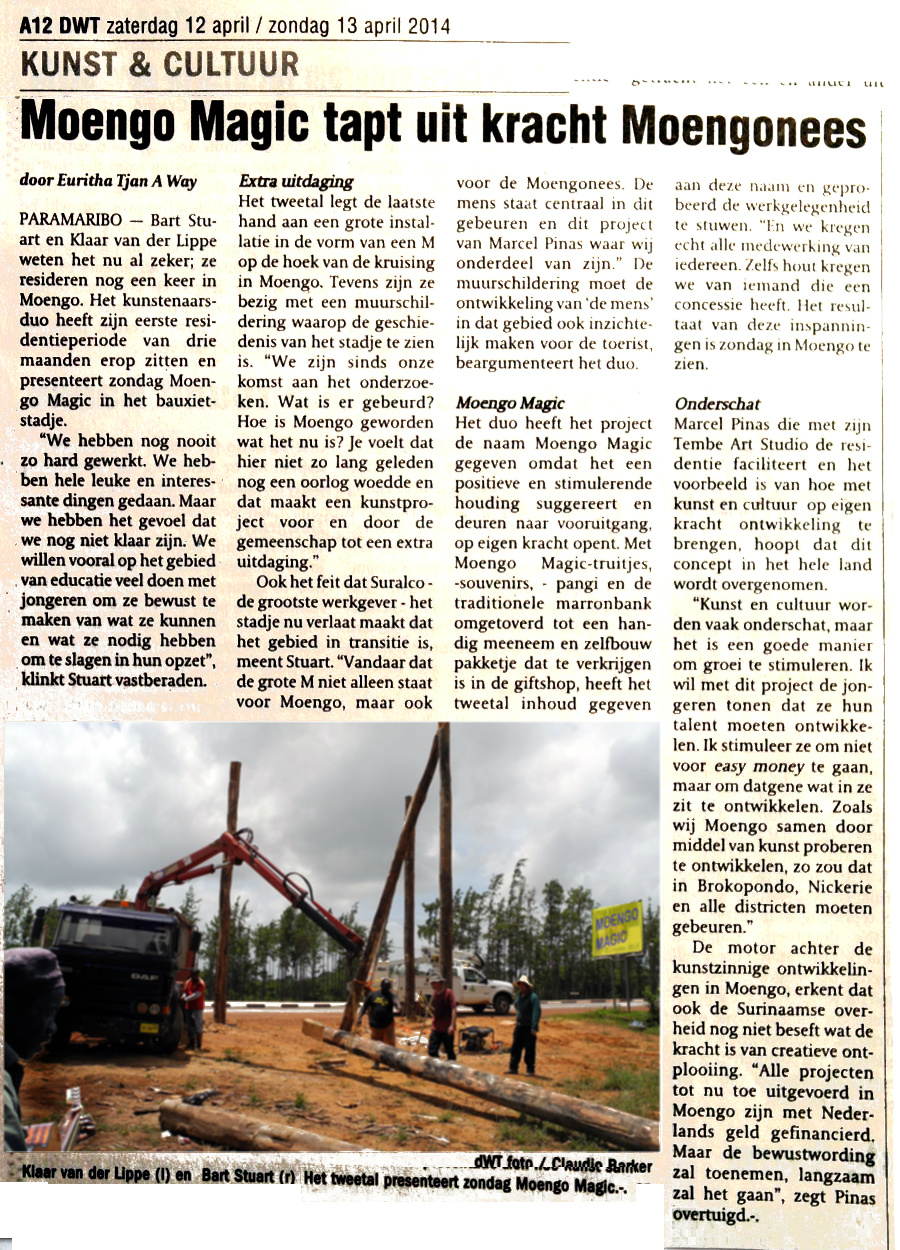
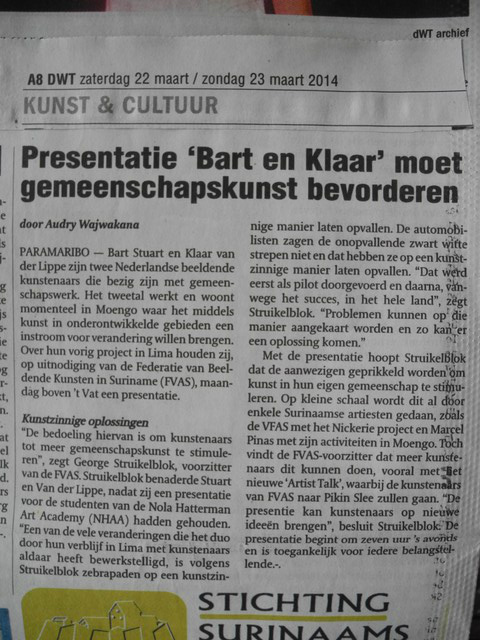
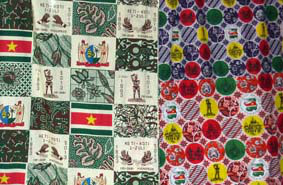
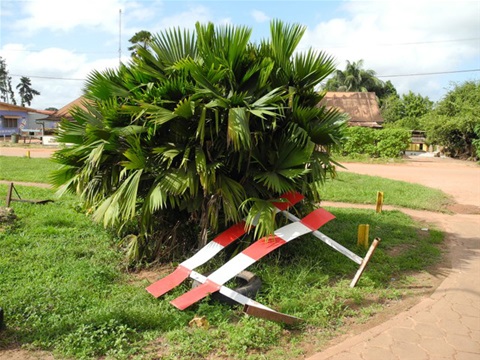
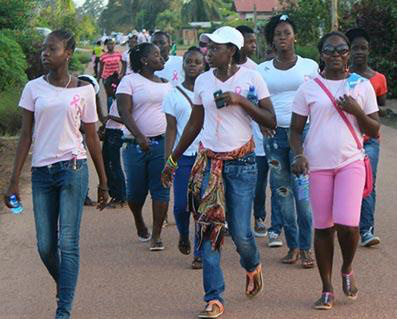
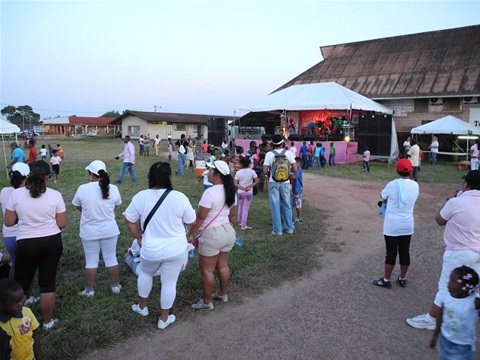
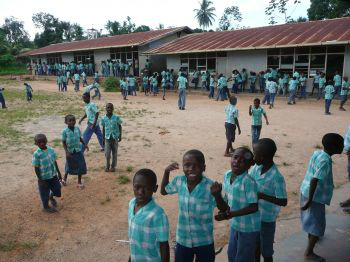
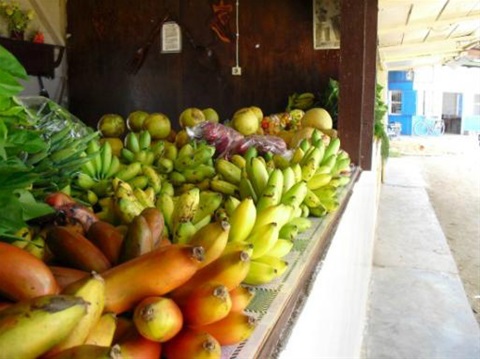
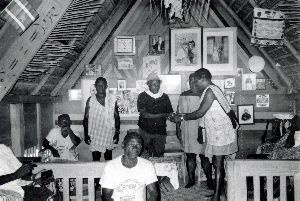
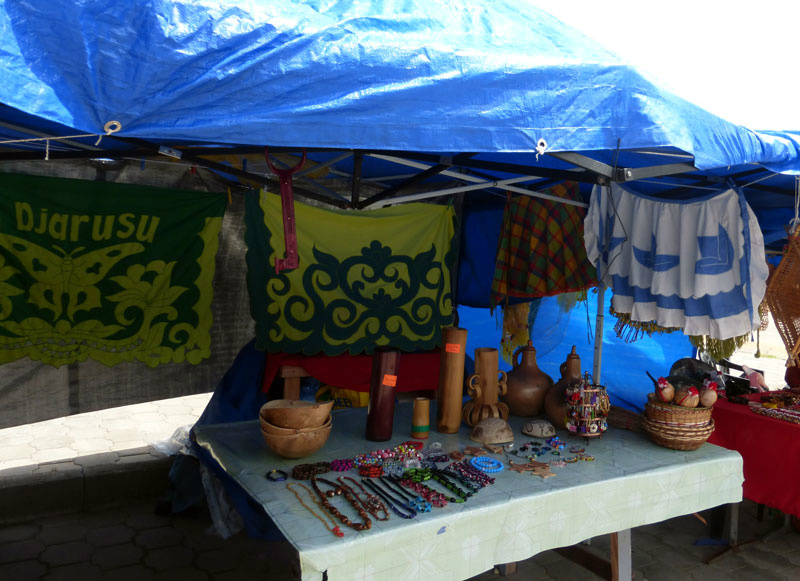
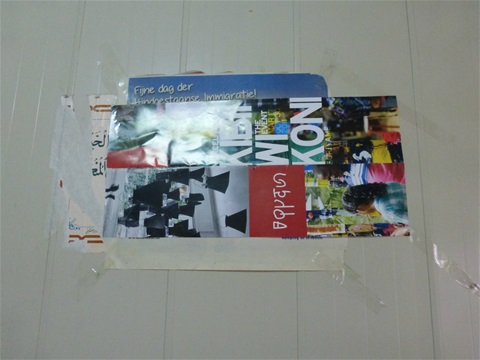
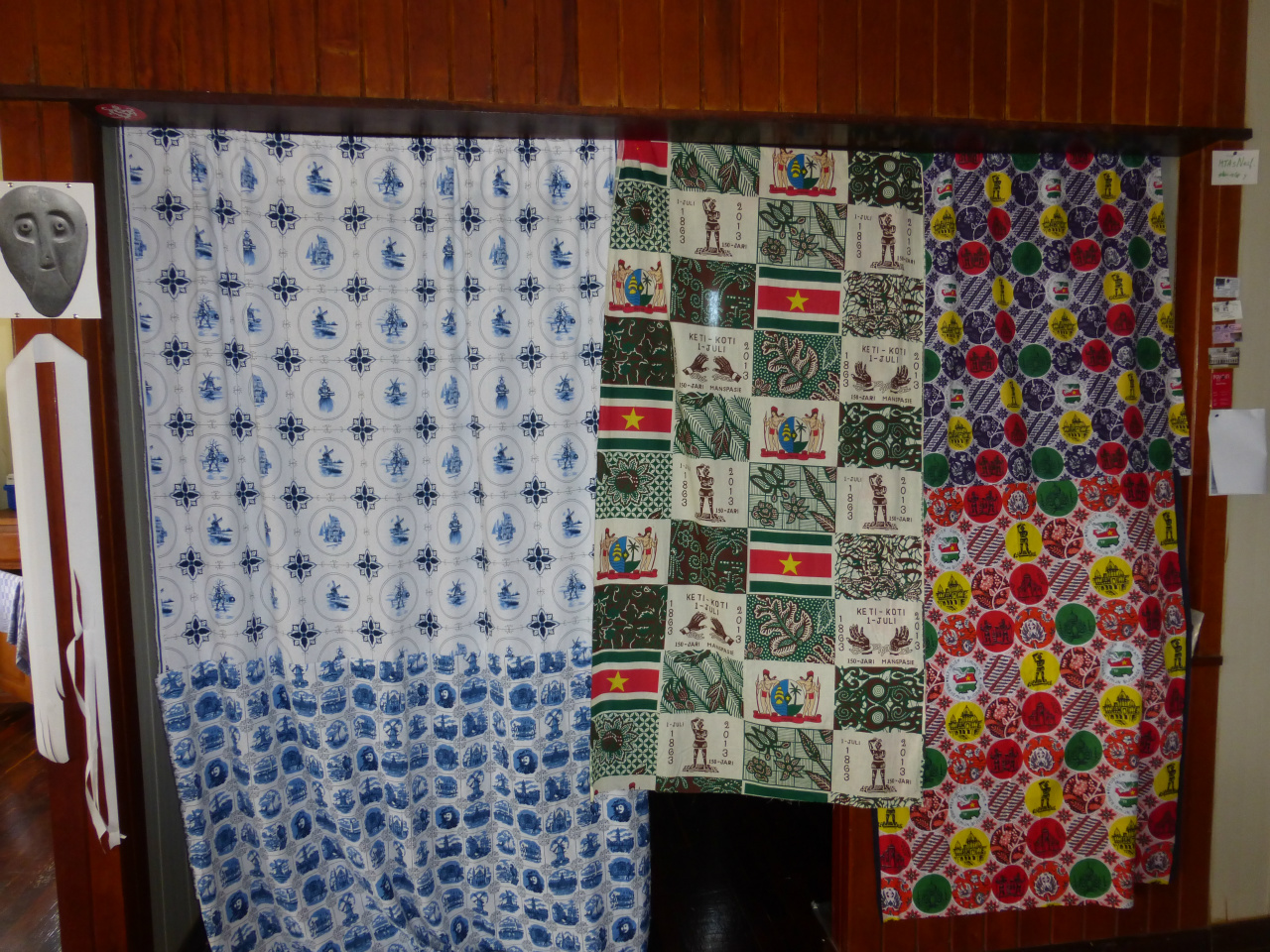
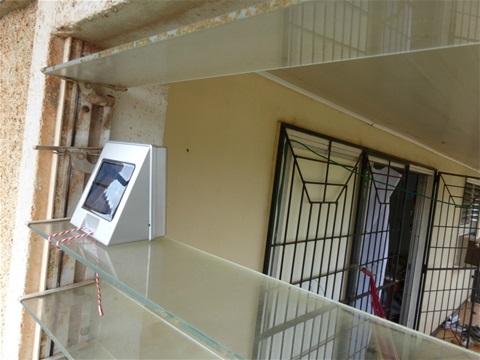
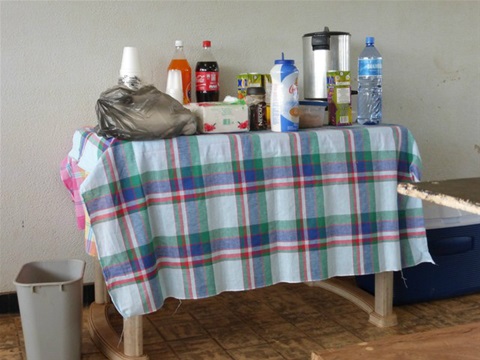
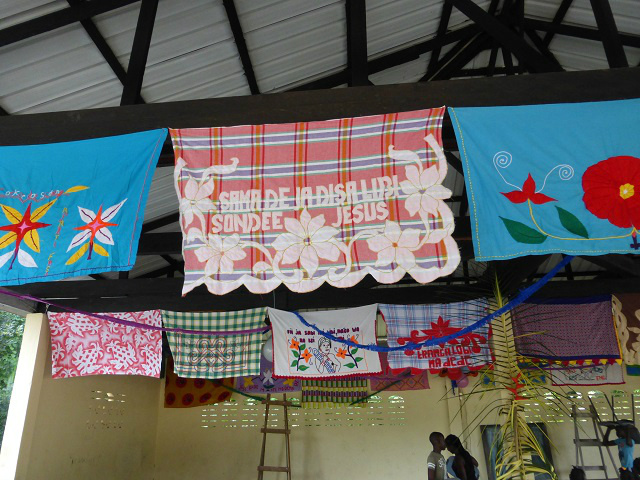
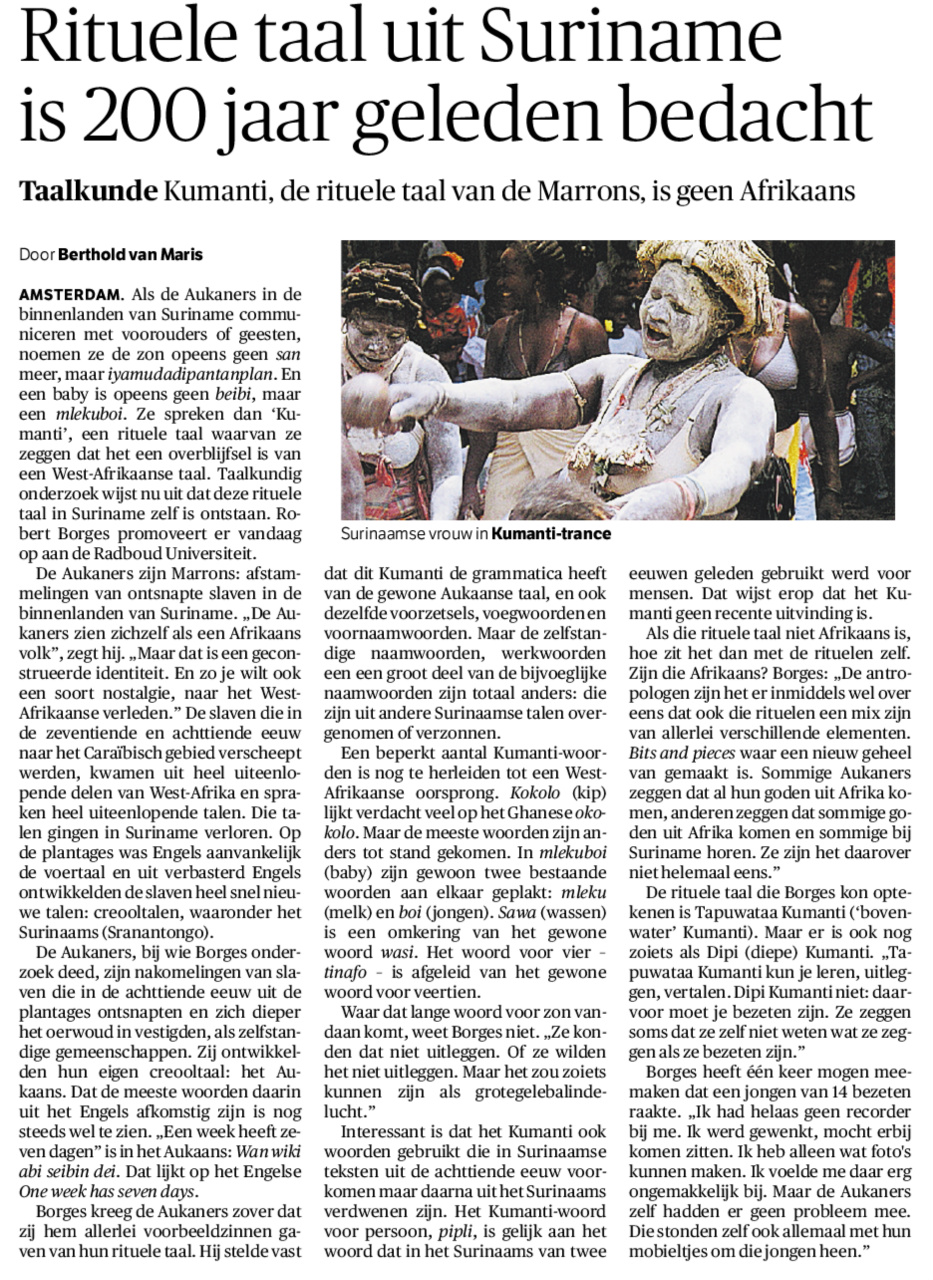
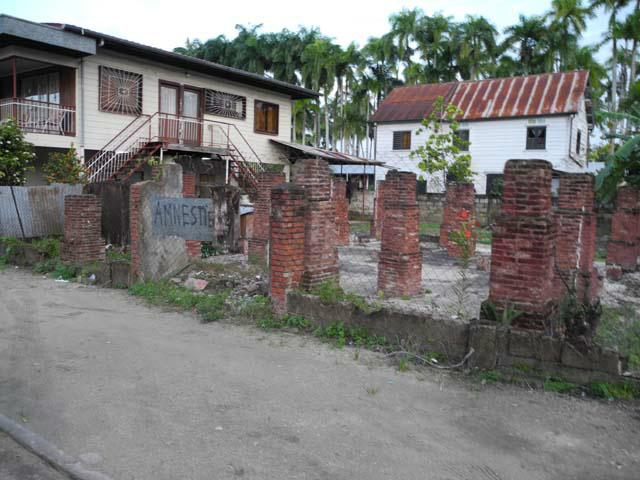
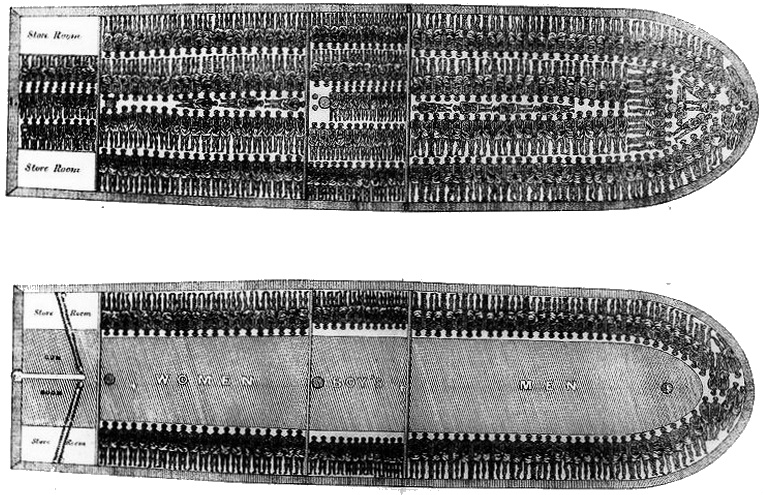
marieke
beeldmaker Boris van Berkum wil ook naar moengo, organiseerde tof wintifeest in Laurenskerk zie: https://vimeo.com/89305095
karen joachim
Heden, verleden, toekomst. Verschillende tijden, verschillende werelden. ik moet nog even wennen aan de beperkte ruimte. ik ga op zoek naar meer.
groet karen